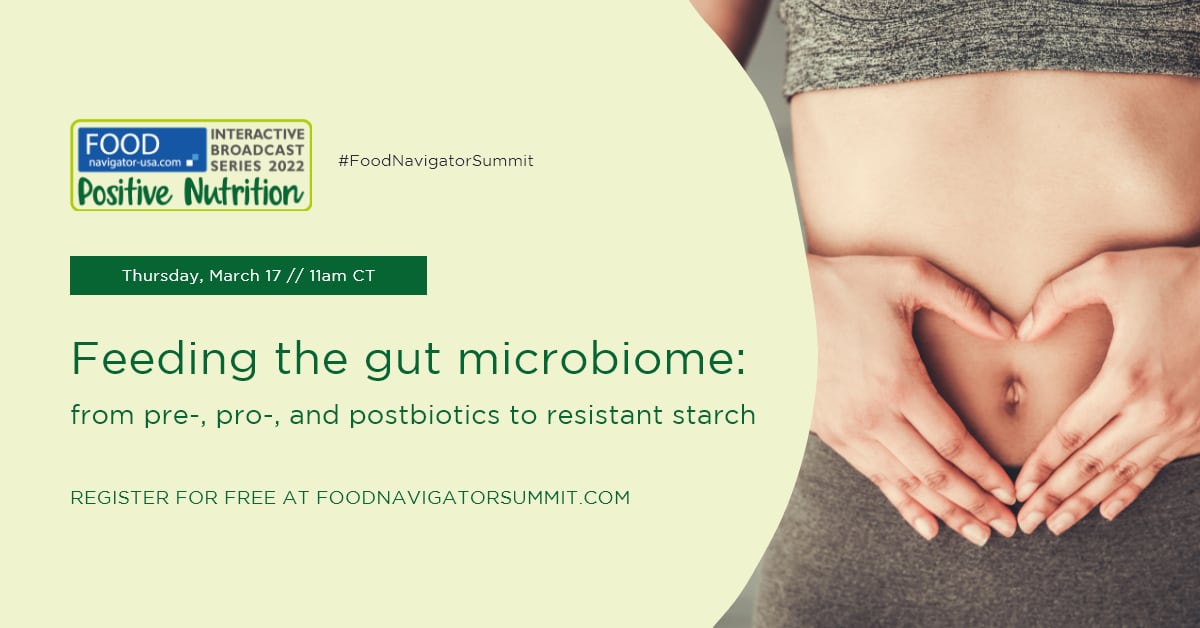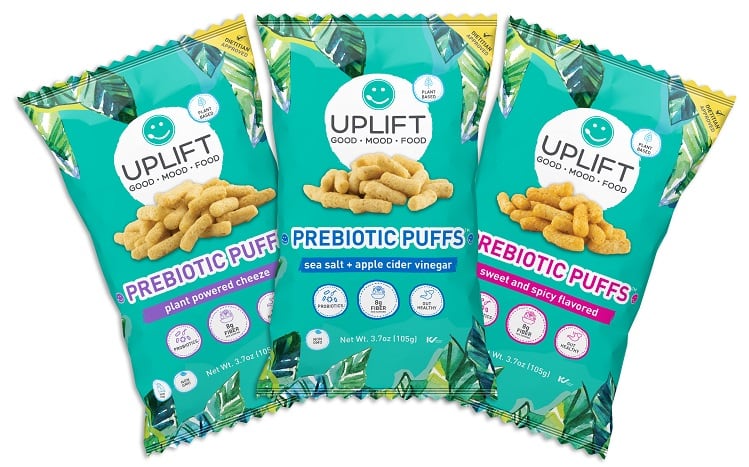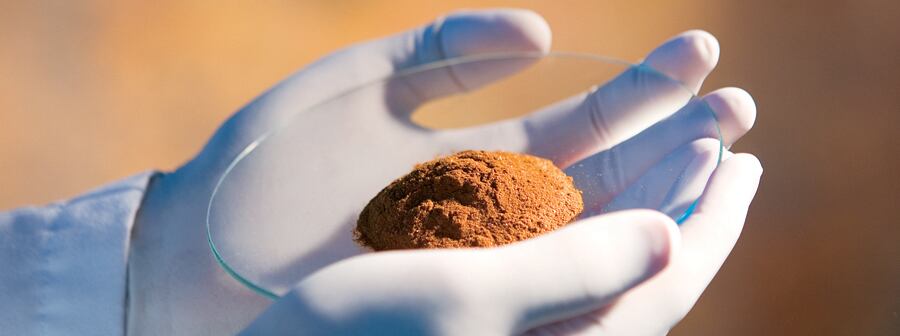There is lingering confusion about the relationship between fermented foods and probiotics (defined by the WHO as live micro-organisms which, when administered in adequate amounts, confer a health benefit), said Dr Bob Hutkins, professor of food microbiology at the University of Nebraska-Lincoln, in our March 17 webinar which is now available on demand as part of our global Positive Nutrition series.
“It’s an issue that ISAPP [International Scientific Association for Probiotics and Prebiotics] and other organizations have been dealing with, which is the overuse of the term ‘probiotic’ to refer to any live microorganism, whereas ISAPP requires documentation of a health benefit, documentation of the strain,” added Dr Hutkins.
“So a [fermented food such as] kimchi that contains live microbes that may even be closely related to an L Plantarum 299V, an established probiotic strain, you can't call that kimchi a probiotic unless you have isolated the strain, characterized the strain, done clinical studies.
“And then that kimchi is going to be different from the kimchi that you make tomorrow. So it's a challenge for companies that are producing fermented foods that probably have live microbes that can provide some benefit that you can’t call them ‘probiotic.’ You can call them rich in live microbes. In my view, and in ISAPP’s view, that's a big distinction.
“I see the phrase ‘contains live microbes’ a lot on fermented foods, and I think that is informative to the consumer.”
'I look at products that say ‘contains probiotics’ and I'd say the vast majority of the time, they're incorrectly named... if they're named at all'
Kombucha, meanwhile (a fermented tea made by adding a culture of bacteria and yeast to a solution of tea and sugar), is another product that many consumers assume is loaded with probiotics by definition, when products in fact vary dramatically, with some brands adding a well-characterized probiotic strain and others simply stating that the product 'contains billions of probiotics' even though the brand owner does not actually know what’s in the beverage in question.
He added: “It's one reason why I think that when you see some of these meta-analyses that say probiotics don't work, it's partly because they've included strains that aren’t probiotics in their studies. If you use probiotics as they are defined [by ISAPP and the WHO], I think those studies would turn out quite differently.”
'I really applaud those companies that put the genus, species, and strain on the packages'
When it comes to labeling probiotics that have been added, meanwhile, the lack of specificity (eg. 'contains bifidobacteria’) is not always helpful to the consumer, he added, given that the benefits of probiotics are strain specific.
“I read labels all the time and I look at products that say ‘contains probiotics’ and I'd say the vast majority of the time, they're incorrectly named if they're named at all.
“I really applaud those companies that put the genus, species, and strain on the packages [eg. Genus: Lactobacillus; species: rhamnosus; strain: LGG] which means if consumers want to, they can actually go and look it up… Absent that, there's no way for a consumer to associate that microbe with a health benefit, other than to just trust the manufacturer."
What does live and active cultures mean on a yogurt label?
The ‘live and active cultures’ seal on yogurts, meanwhile, does not mean ‘probiotic,’ but is basically just saying that a product was made with a certain number of cultures that turn milk into yogurt, he said. “It’s a pretty precise declaration about the culture microbes, not any adjunct or probiotic microbes that might have been added.”
However, one clear side benefit of these cultures is that they break down lactose (milk sugar) and therefore improve the digestion of dairy products for people with lactose intolerance, which could be considered a ‘probiotic’ effect, argued Danone North America VP health & scientific affairs Dr Miguel Freitas.
That said, the lack of specificity in marketing around probiotics has also led some consumers to see them as a cure-all, he said: "We know the benefits of probiotics are strain specific, but… there are many consumers that are just looking for the word ‘probiotic’ on pack, and believe that the probiotic is going to do everything…”
'I think we need to figure out how do we clean this up a bit?'
Todd Beckman, founder of microbiome startup Verb Biotics and co-founder of digestive health brand GoodBelly, added: “We launched GoodBelly in 2008 when awareness around probiotics was very low…We saw a lot of products [without science beyond them] come and go, but they just added to the confusion. And if consumers then start not believing in probiotics, it’s quite damaging… so it matters.
“I think we need to figure out how do we clean this up a bit? Health claims matter and if you're out there not being honest with the consumer, as a brand you're not doing great things.”

‘The argument that apple cider vinegar has any kind of efficacy as a prebiotic is just non-existent’
Speaking in the second panel debate in the webinar (Prebiotic fibers and resistant starch, starting 1:46:50), Ben Goodwin, co-founder of fast-growing functional beverage brand Olipop, argued that the word ‘prebiotic’ (defined by ISAPP as “a substrate that is selectively utilized by host microorganisms conferring a health benefit") is also being thrown around a little too liberally by food marketers.
“This happens anytime something becomes a hot trend. People think here's a way to make some cash,” said Goodwin, who formulated Olipop with plant fibers, prebiotics and botanicals, and unusually for an emerging CPG brand, has worked with Purdue and Baylor College of Medicine on invitro tests demonstrating its prebiotic effects (click here ).
“Apple cider vinegar is a great example,” claimed Goodwin. “There's nothing wrong with apple cider vinegar, it’s got acetic acid, it does some useful things for the pH of your digestive tract, but the argument that it has any kind of efficacy as a prebiotic is just non-existent.
“You kind of poke and say what's going on? And the company says, well, apples have pectin, so by proxy, apple cider vinegar has pectin, even though none of the nutritional assays really evidence that, or it’s present in such trace levels that it would never be efficacious [as a prebiotic].
“So I see two major trends… One, people who just slam a ton of one ingredient [eg. one kind of prebiotic fiber] in there and hope nobody has insane gas; and two, people with brands where there's just not a real amount of anything in there.”
'Go seek some support from someone who can help with the formulation, who understands the space'
Kara Landau, founder of gut healthy brand Uplift Food and nutrition advisor at the Global Prebiotic Association, noted that while apple skin and pulp contain pectin, which is a prebiotic fiber, apple cider vinegar (ACV) generally does not, adding: “I think most people are coming from a good place where they want to bring more natural, gut healthy ingredients into people's lives. But go seek some support from someone who can help with the formulation, who understands the space.”
In other cases, said Landau, the issue is not with the ingredient per se, but the application. So green banana flour from unripe bananas is high in RS2 resistant starch, which is not digested in the small intestine and has beneficial effects on blood glucose among other things, making it an intriguing prebiotic. But if you’re selling it in a baking mix that will end up in a hot oven, or adding it to cereals processed using high pressure and heat, the starch won’t be ‘resistant’ anymore.
Keto diet... 'not the most beneficial for our gut microbiome'

So what do we know about what a healthy gut microbiome looks like, overall? And what dietary pattern is best for achieving that?
“I would say that high fiber diets… tend to increase diversity,” said Dr Hutkins. “And in contrast, diets that lack fiber, that are high in fat, high in sugars, promote lower diversity and are associated with a range of diseases. So, translating that to nutritional advice, it's what we've been hearing for decades, diets rich in fruits and vegetables and whole grains and legumes are likely to support a healthy microbiome.”
Generally, he said, diversity is good, “but it’s really about functional diversity, not just who's there [in your gut], but what they're doing… you want microbes that can do a lot of different things.”
Dr Freitas noted that a recent study funded by Danone Nutricia Research and published in the American Journal of Clinical Nutrition exploring the gut bacteria of Americans suggested that a “reductionist” high-fat, ultra-low carb keto diet “was not the most beneficial for our gut microbiome when it comes to increasing diversity or increasing numbers of beneficial bacteria.”
Antibiotics, hyper-sanitary environments, c-sections, poor diet 'messing with our microbiome'
For those suspecting our guts can function perfectly well without the ingestion of a daily dose of ‘good’ bacteria, Dr Freitas pointed out that until relatively recently, this was probably the case.
However, several factors have combined in the last 70+ years to upset the delicate balance of our internal microflora, he claims, from hyer-sanitary environments to the 'western diet': “We use more antibiotics, there are more c-sections, our diets have changed so much, and all of this is messing with our microbiome.”
For infants, meanwhile, “I think there are some very clear examples of interventions we can make,” added Dr Freitas. “We know that children born by c-section are nearly twice as likely to have asthma in the future. We know that kids that grow up in a sterile environment probably will also develop more allergic diseases in the future.
“And this all has to do with how bacteria educate our immune systems and prepare our immune systems for the future. Knowing that, there are things we can do to optimize how the baby's microbiome evolves and that's why for example, in infant formula, we should be trying to mimic as much as possible, breastmilk, including maybe Bifidobacterium or prebiotics.”
And gut healthy habits are important throughout life, Dr Hutkins added: “I liken it to a vitamin that you take regularly. Even if you eat healthy or exercise daily, whether it's live fermented foods, a high fiber diet, or whether it's a probiotic, prebiotic or postbiotic, it ought to be part of one's lifestyle that you consume regularly.”
The gut-brain axis
Looking ahead, Dr Freitas said he was interested in the gut-brain axis, adding: “Since we discovered that our digestive system has the largest number of nervous cells in the body after our brain, that has just opened so many doors in how bacteria could influence that connection between the gut and the brain. We all know the concept of butterflies in your stomach, right?
“We all know that when you're more worried and stressed, you might have bloating and digestive issues. So coming up with interventions or products or foods that could eventually have an effect on our mood or an effect on certain psychological disorders. I think that would be a huge breakthrough.”
Designer probiotics and postbiotics
Beckmann at Verb Biotics said food and beverage companies are also looking for new probiotics and postbiotics that move beyond digestive health: “What's some of the new science around the gut brain axis, and the [relationship between the] microbiome and metabolic health and healthy aging?”
A spinoff from synthetic biology company Gingko BioWorks, Verb Biotics starts with a health target in mind such as reducing stress or increasing satiety and then tries to understand the mechanism of action to deliver that health outcome, and determine what microbe could potentially deliver it, he said.
“With the Gingko system, we can screen hundreds and thousands of strains to find microbes that have these hidden gems of metabolite production or the characteristics we're looking for,” he said, but could also take a synthetic biology approach and write metabolic pathways into microbes to enable the production of target component.
'Just as there is no one prebiotic, and no one probiotic, as the benefits are strain specific, the same applies to postbiotics'
Meanwhile, postbiotics – defined by ISAPP as a “preparation of inanimate microorganisms and/or their components that confers a health benefit on the host” – will also give food and beverage companies more options, especially for shelf-stable products, said Dr Justin Green at Embria Health Sciences (Cargill), which markets a yeast fermentate called EpiCor.
“If you really want to make it simple, you have a live microorganism, whether it’s bacteria or yeast or algae… and then you kill it. But if you then isolate a specific compound that that organism made, that is no longer a postbiotic. A postbiotic should have at least some fragments of those live organisms that you’ve fermented up.
"Ideally, it would be the whole organism in the case of EpiCor, it is everything, some of the yeast has been broken apart, but we don’t filter out anything. The only thing that's lost is anything that evaporates during the drying process.”
But “just as there is no one prebiotic, and no one probiotic, as the benefits are strain specific, the same applies to postbiotics,” claimed Dr Green. “So we really have to drive home that there are going to be different postbiotics, different organisms, different fermentation techniques and most importantly, different health benefits.”

FoodNavigator-USA's 'Feeding the Gut Microbiome' webinar, part of our Positive Nutrition virtual series, is now available ON DEMAND if you register here.
Fireside chat: Dr Miguel Freitas, Danone North America: 01:45
Presentation: Postbiotics, the lowdown, Dr Justin Green, Embria Health Sciences: 26:30
Panel: Probiotics, postbiotics, and fermented foods: 47:42
Presentation: Prebiotic corn fiber in focus, Dr Melissa Kaczmarczyk at Tate & Lyle: 1:31:25
Panel: Prebiotics and resistant starch: 1:46:50




